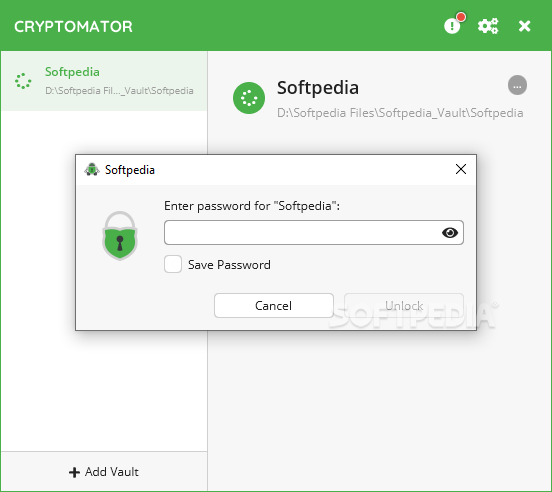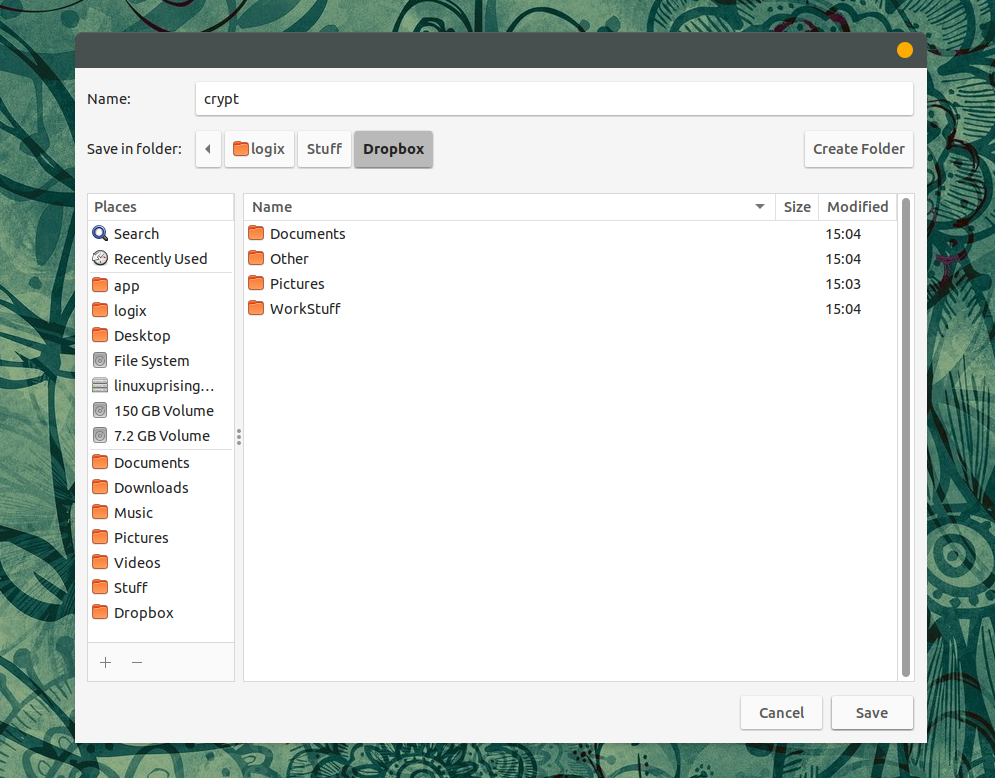

- #Cryptomator vaults mounting how to
- #Cryptomator vaults mounting install
- #Cryptomator vaults mounting password
- #Cryptomator vaults mounting Pc
- #Cryptomator vaults mounting download
the vault) to ensure that everything inside is indeed encrypted (by checking if the filenames are encrypted). Of course, you can look inside the target location (i.e. You should only interact with the virtual drive and don’t put unencrypted data in the target location from step 3. To work on your unencrypted data, you’d have to follow step 5 and that’s what the virtual drive is for. The target location from step 3 only contains encrypted data. Unlock your vault, which opens up a virtual drive, in which you can store your data.
#Cryptomator vaults mounting password
Set the target location inside either the local sync folder (provided by the sync tool) or network share and give your vault a name.Īssign a password to your vault and confirm it.
#Cryptomator vaults mounting how to
This is a quick guide on how to create and unlock a Cryptomator vault:Ĭreate a new vault by clicking the “+” button at the bottom left.
#Cryptomator vaults mounting install
If you would like to use Cryptomator to encrypt your cloud storage, you either have to install a sync tool (e.g., Dropbox, Google Drive, etc.) or mount the server as a network share. The application does not connect to a cloud storage service directly (only applicable to Cryptomator for Desktop).

Otherwise, if you set cryptomator by thier How to:Ĭryptomator’s only task is encryption. This will help if anything goes wrong in dealing with an online (cloud) sync service like dropbox. I'm new to Linux and recently learned of cryptomator, great tool! This thread serves to remind me to go back and install it- so thanks for the reminderįor your concerns on an OS and cryptomator reinstall are valid and as in all things computing make backups (stored on drive other than one used by OS, etc). How can I get the newly installed Cryptomator to relink to the encryption folder on Dropbox to open the encryption folder in Cryptomator? Thank you for your help. However, if I wipe out my laptop's hard disk drive or buy a new laptop I'll need to reinstall Cryptomator in a freshly wiped out hard disk drive, i.e., there are no hidden system files linking Cryptomator to the folder. This folder shows up and is listed in Cryptomator because Cryptomator and the folder are linked. If the vault is synced with the cloud, the encrypted files will then be transferred.Hi all, With Cryptomator I created a folder in Dropbox wherein encrypted files and folders are stored. When new files are put there, Cryptomator will do the encryption on the fly and place them inside the vault (encrypted folder). Once you unlock the vault, the Cryptomator will mount a drive where all files are accessible. The only thing you have to remember is a password.
#Cryptomator vaults mounting Pc
The folder can be stored locally (on your PC or phone) or in the cloud (i.e. However, none of them were as convenient as Cryptomator ( ) because I had to encrypt/decrypt files myself.īasically, Cryptomator will create a vault – a password-protected folder. password-protected archives or GPG encryption (by using a certificate uploaded to U2F key). To mitigate this issue at least a bit, I used i.e. No matter whether I have anything to hide or not. I would rather say my data is not someone’s else business. Sometimes people say they do not care as they have nothing to hide.
#Cryptomator vaults mounting download

A cloud is a convenient solution, however, I always felt remorse after putting my important data there for While I have never had any issues with the first two points, keeping the backup offsite was somehow problematic for me. If we talk about backups, there is also one another pretty wise rule: The 3-2-1 backup rule:ģ: Create one primary backup and two copies of your data.Ģ: Save your backups to two different types of media.ġ: Keep at least one backup file offsite. I guess we all know this saying and I guess all of us have already advanced from type 2 to type 1 a long ago:


 0 kommentar(er)
0 kommentar(er)
